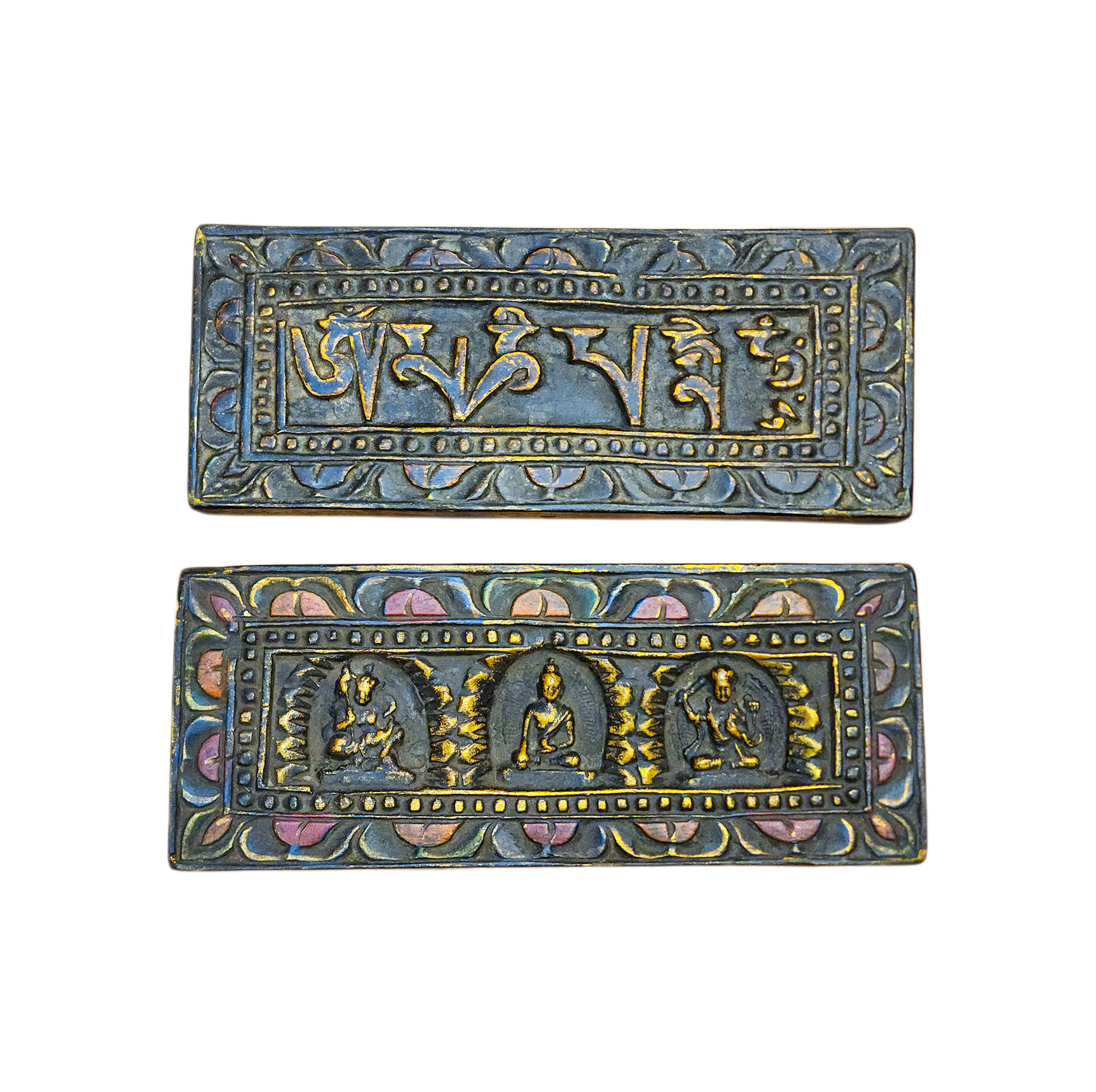Ritual Discount
We are providing 15% price on all ritual Items.
Antique Finishing
This is an antique patina-finished Book Cover. This is not an antique statue. It is just an antique patina finish. This Book Cover is a testament to the artisan's mastery of the art of aging. Its antique patina has been meticulously crafted to give the appearance of an aged statue, showcasing the artist's unique techniques and skills. Through undisclosed processes and careful aging treatments, the Book Cover undergoes a transformation that captures the essence of time and history.
This art form is shrouded in secrecy, as each artisan holds their own closely guarded formulas and methods. With deep knowledge of materials and an artistic sensibility, they skillfully replicate the natural aging process, infusing the Book Cover with a sense of authenticity and character. The result is a captivating piece that tells a visual story, evoking a bygone era and adding a touch of allure to any space.
The artist's dedication to creating an aged aesthetic goes beyond mere appearance. It is a deliberate and intentional effort to give the Book Cover a unique identity, imbued with the charm and beauty of time. With every carefully applied treatment and artistic touch, the Book Cover becomes a work of art that not only stands as a testament to the artisan's skill but also carries a sense of history and narrative, making it truly exceptional.
Read More
OM Mani Padme Hum : What is Om Mani Padme Hum
"Om Mani Padme Hum" is a sacred mantra in Tibetan Buddhism that holds deep spiritual significance. It is associated with Avalokiteshvara, the bodhisattva of compassion. The mantra is a powerful invocation and is believed to encompass the essence of compassion, wisdom, and enlightenment.
Each syllable of the mantra represents a specific quality:
"Om" represents the pure exalted body, speech, and mind of enlightened beings.
"Mani" symbolizes the jewel, which stands for the altruistic intention to attain enlightenment.
"Padme" means lotus and represents wisdom.
"Hum" signifies indivisibility and unity.
When reciting or meditating upon this mantra, practitioners aim to cultivate compassion, wisdom, and a deep understanding of the interconnectedness of all beings. It is believed to have the power to purify negative emotions, liberate from suffering, and lead toward enlightenment.
The mantra is often chanted, written, or inscribed on prayer flags, wheels, and stones. Its resonance and repetition are said to create positive vibrations that benefit both the practitioner and the surrounding environment.
Read More
Buddha : About Buddha
Gautama Buddha, popularly known as the Buddha, He is regarded as the founder of the world religion of Buddhism, and revered by most Buddhist schools as a savior, the Enlightened One who rediscovered an ancient path to release clinging and craving and escape the cycle of birth and rebirth. He taught for around 45 years and built a large following, both monastic and lay. His teaching is based on his insight into the arising of duḥkha and the ending of duhkha the state called Nirvana
The Buddha was born into an aristocratic family in the Shakya clan but eventually renounced lay life. According to Buddhist tradition, after several years of mendicancy, meditation, and asceticism, he awakened to understand the mechanism which keeps people trapped in the cycle of rebirth. The Buddha then traveled throughout the Ganges plain teaching and building a religious community. The Buddha taught a middle way between sensual indulgence and the severe asceticism found in the Indian śramaṇa movement. He taught a training of the mind that included ethical training, self-restraint, and meditative practices such as jhana and mindfulness. The Buddha also critiqued the practices of Brahmin priests, such as animal sacrifice and the caste system.
A couple of centuries after his death he came to be known by the title Buddha, which means "Awakened One" or "Enlightened One". Gautama's teachings were compiled by the Buddhist community in the Vinaya, his codes for monastic practice, and the Suttas, texts based on his discourses. These were passed down in Middle-Indo Aryan dialects through an oral tradition. Later generations composed additional texts, such as systematic treatises known as Abhidharma, biographies of the Buddha, collections of stories about the Buddha's past lives known as Jataka tales, and additional discourses, i.e. the Mahayana sutras.
Read More
About Color Finishing
The Book Cover is adorned with traditional colors, creating a captivating aesthetic through a combination of gold and various hues. This painting technique follows a time-honored process that aims to faithfully represent the Book Cover in accordance with traditional color descriptions. In the context of Buddhist statues, this approach holds great significance. Each statue has its own primary color, and it is crucial to depict the statue in its authentic shade.
This adherence to color accuracy is akin to the meticulous artistry seen in thangka paintings. To achieve this finishing, organic colors and genuine gold are used, while the expertise of a skilled thangka artist is sought, as painting on a metal surface requires a distinct set of skills to bring out the elegance and beauty of the statue.
By employing this traditional coloring method, the Book Cover is not only aesthetically pleasing but also maintains its cultural authenticity, paying homage to the rich traditions and practices associated with Buddhist art.
Read More
